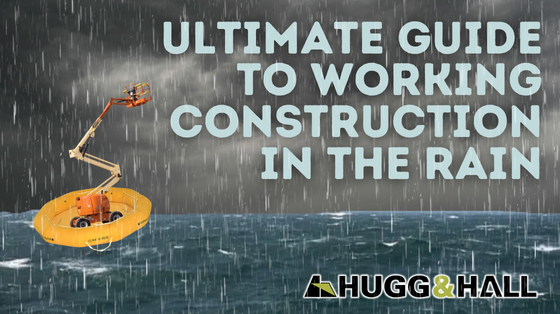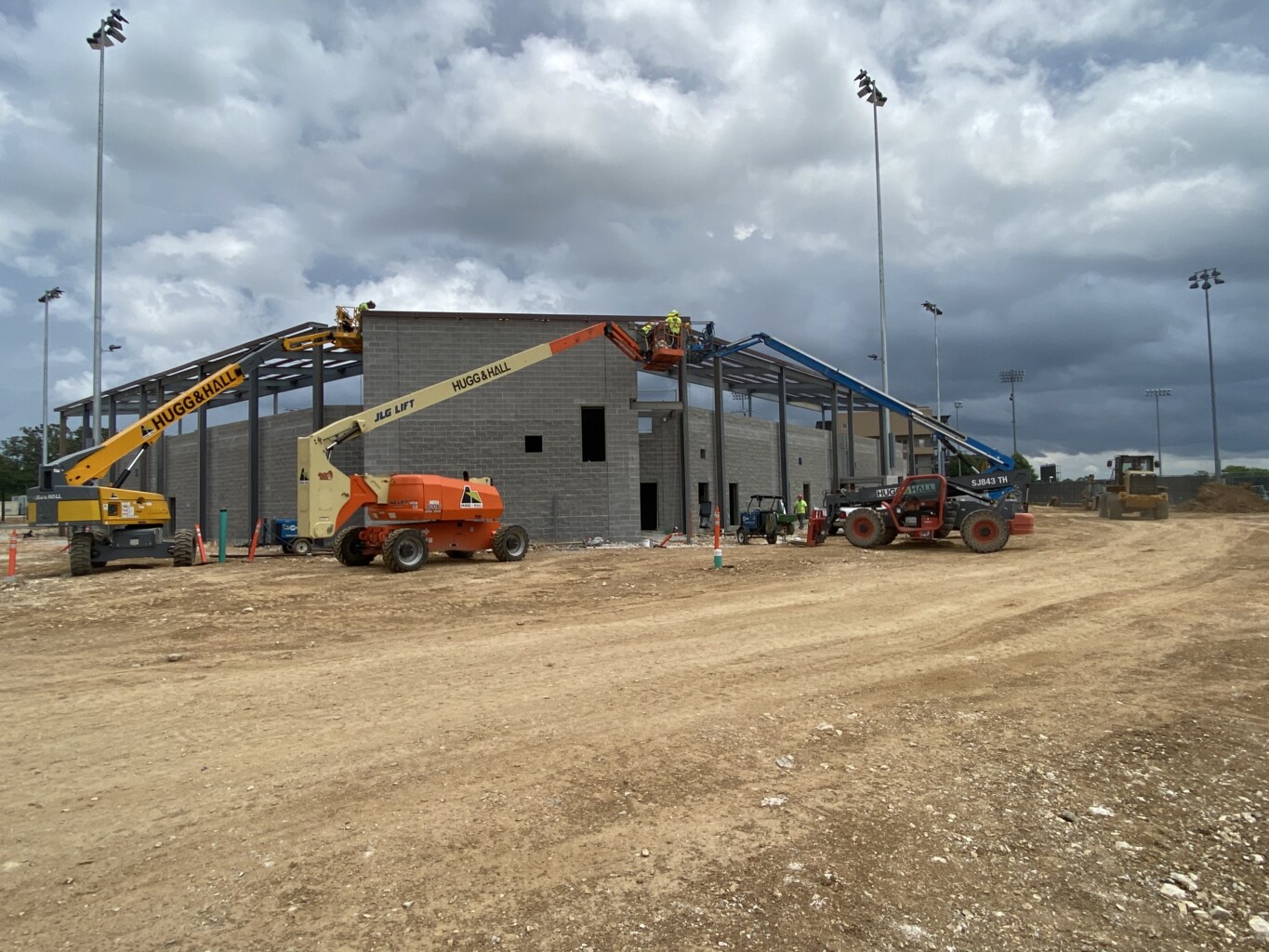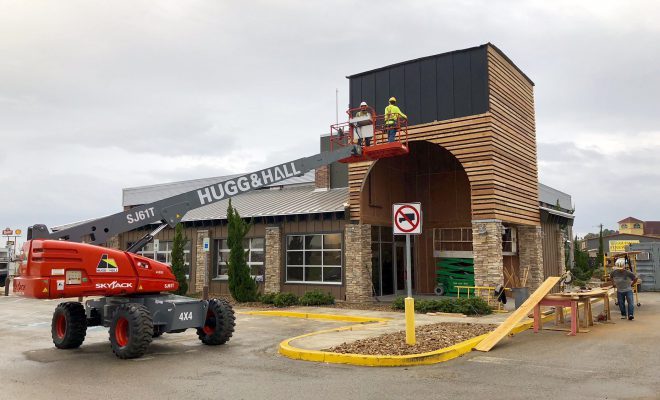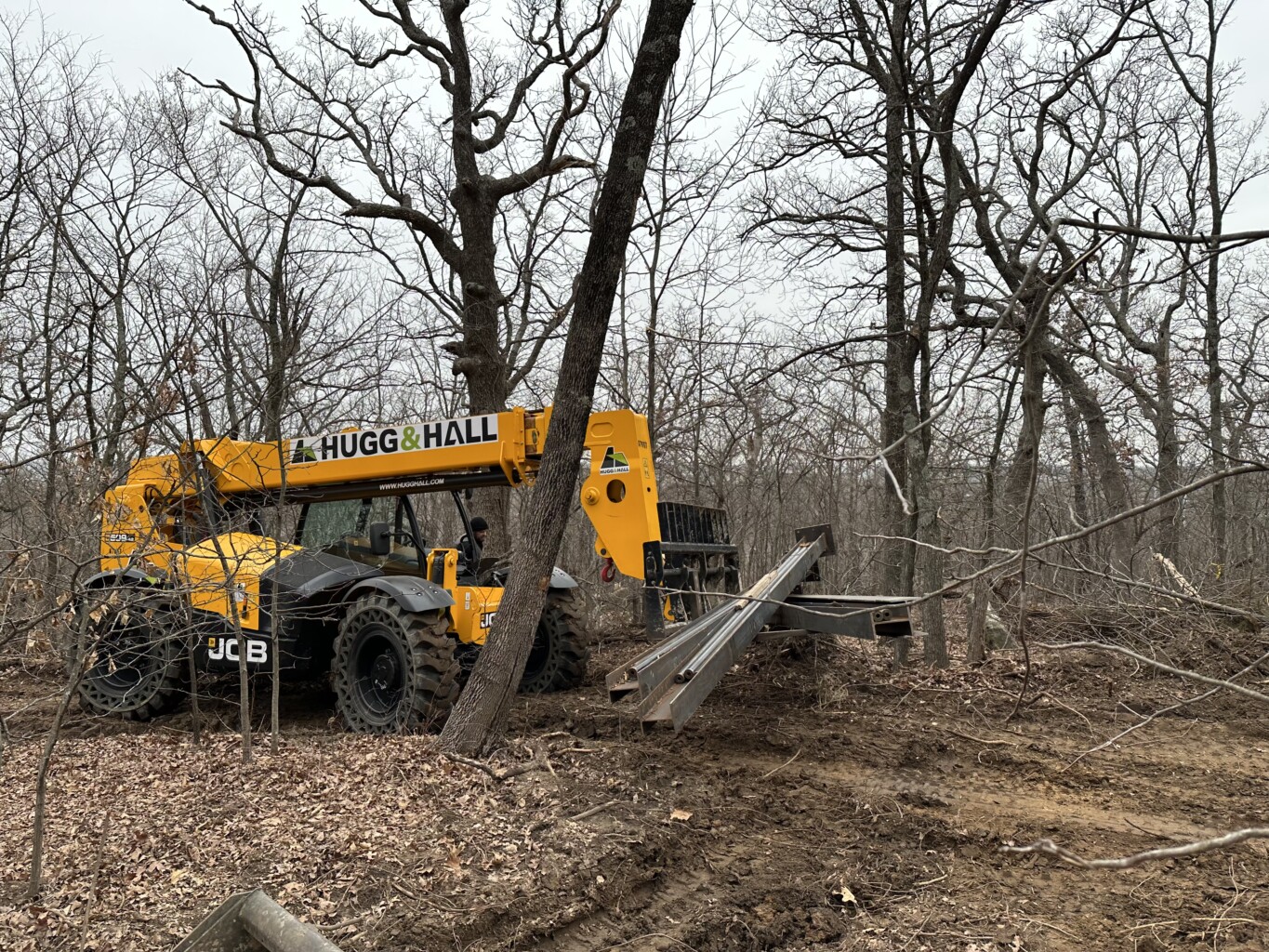
Ultimate Guide to Working Construction in the Rain

If you’re in construction, you know working in the rain comes with its own unique issues. Construction sites that are safe when the weather is clear can become difficult or even dangerous when it’s raining. Here’s Hugg & Hall’s ultimate guide to working construction in the rain!
Challenges of Working Construction in the Rain
1. Safety. Your top priority is keeping your team safe. Rain makes surfaces slippery and obscures vision. Prolonged exposure to wet conditions can result in illness and, if the temperature is below 60°F, even conditions like hypothermia, frostbite, and trench foot. Check out our article about preventing cold-related illnesses to learn more about these conditions.
2. Delays. Plan ahead for rainy days and always give yourself a time buffer, especially when bad weather is possible.
3. Damage. Wind and rain can damage unfinished projects. Untreated wood warps in the rain, and the extra moisture can cause your frames to crack and swell. High winds can also make operating equipment more dangerous, especially scissor lifts and boom lifts. Your equipment can be damaged and your employees’ health can be jeopardized.
4. Severe storms. Working in a drizzle is one thing, but severe storms present a host of other problems. Cease operations when you are under a severe thunderstorm warning, lightning or wind advisory, or tornado watch. Heavy rain can also cause mudslides and downed powerlines.
How to Keep Your Jobsite Safe in the Rain
Create a weather plan according to these bullet points and educate your team.
1. Wear high-visibility clothing.
All of your employees should be provided with vests that make them easily visible to equipment operators. If your vests are dull or old, replace them. The cost of a few new vests is worth the risk reduction of making sure your employees are visible.
2. Use and wear the proper PPE.
What constitutes proper PPE will depend on the temperature and precipitation.
- Footwear: wear OSHA-approved footwear with heavy treads to avoid slipping. Always allow your team to change their footwear and take a break to dry out their boots if they get wet, and educate your employees about the symptoms and dangers of consistently wet feet, including trench foot when the temperature drops below 60°F.
- Outerwear: on colder days, your team should wear water-resistant coats. If the temperature drops below 50°F and their clothes are wet, your team can be at risk of hypothermia.
- Gloves: use non-slip gloves so your team can properly grip machine controls.
- Safety glasses: ensure your team can see well by providing anti-fog spray or wipes for their glasses or goggles.
3. Constantly monitor the weather conditions and make sure they aren’t worsening.
Severe thunderstorm and tornado warnings can spring up quickly and put your employees in danger. If tornadoes are a possibility during your project, provide your team with a mobile storm shelter from Hugg & Hall Mobile Storage.
Hugg & Hall Mobile Storage is an affiliate company and separate from Hugg & Hall Equipment Company. We do not rent portable storage containers or storm shelters.
4. Provide lightning-safe shelters at your jobsite that can safely accommodate your team.
Statistically, 2 out of every 10 lightning-related deaths occur on the job. Your team should have access to an enclosed shelter away from tall structures. Workers should stay in the shelter until 30 minutes after the last thunder has faded.
If safe building structures aren’t available, make sure employees can get in their personal vehicles or other hard-topped metal vehicles with rolled-up windows.
5. Be cautious of live wires and lightning strikes and avoid using electrical tools in the rain.
Electricity becomes more dangerous in wet conditions, especially in standing water. The charged ions, minerals, and impurities in water conduct electricity, making shocks and electrocution more likely.
6. Work slowly and cautiously.
The ground can be muddy or slick, and tools and controls can be slippery. Encourage your employees to watch their footing to prevent falls.
7. Use rubber tracks or anti-skid chains for safety.
Tracks can help prevent your equipment from getting stuck, sliding, or slipping.
8. Secure and store loose materials and equipment in severe winds.
When the wind picks up, tools, dumpsters, and even portable bathrooms can become dangerous. If your jobsite is under a severe thunderstorm warning or tornado watch, prioritize getting your employees safely inside. However, if you are under a wind advisory and your team isn’t in immediate danger, secure these items to help avoid injury.
9. Anchor the roof panels on partially installed roofs.
Roof panels can easily become detached if they’re not anchored. If the wind catches them, they can go flying and cause injury or property damage.
10. Install drainage systems and have a pump on-hand.
Standing water can cause delays on your jobsite, and it can be dangerous. Electricity, as we mentioned above, uses ions in water as a conductor. Anyone who steps into a jobsite with standing water unnecessarily takes that risk. Avoid it entirely by ensuring your jobsite has drainage systems and can be pumped if needed.
11. Secure hazardous chemicals before weather hits.
If your jobsite has any hazardous chemicals, or anything that shouldn’t come into contact with the ground, make sure they’re put away before a storm.
12. In areas prone to hurricanes, establish a plan to relocate your equipment to safer areas before a hurricane hits.
When a hurricane storm surge happens, it can cause the water level to increase by 30 feet or more. Construction equipment can be damaged by standing water, and if it’s too close to the storm surge, it can even be carried away. When a hurricane is predicted or forming, don’t wait. Get your equipment and your team safe.
Takeaways
Working construction during the rainy season doesn’t have to be debilitating. If you have a plan and your employees know how to follow it, you’ll keep your team safe and your jobsite productive.
At Hugg & Hall, we’re committed to providing you with safe, high-quality equipment. We care about the safety of you and your crew. Contact our team to learn more about the equipment, parts, and services Hugg & Hall has to offer!
Back to News
Subscribe and unlock cutting-edge equipment insights, trends and tips!
Subscribe


